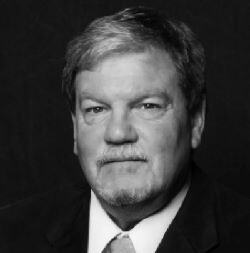Looking Forward
Sustainability

Speeds in this frenetic pace from day to day,
And all our yesterdays have highlighted tools to utilize or ignore.
For facility managers, time is elusive. Tomorrow can morph so quickly into today that “the future” becomes an abstract concept. Planning for the near future could just mean preparing for the following day. Even “the past” is ambiguous – the effects of an action taken 20 years ago, or a decision made as soon as yesterday could exist henceforward, for better or worse, either temporarily or permanently. Regarding the environment, FMs have a great deal of input into the actions and decisions that determine which state of existence the effects will fall.
Sustainability is also abstract: a philosophy in which past, present and future converge. It is about trying to reverse – and being careful not to repeat – prior harmful actions, making better choices to successfully meet today’s needs, while also ensuring that tomorrow’s generations are set up to successfully meet theirs.
As FMs look ahead, the decision to adopt new energy sources is imperative to curtailing greenhouse gas emissions (GHGs) – mitigating the permanence of GHG effects. And while almost every renewable energy solution has its drawbacks, choosing renewable energy over fossil fuels is today’s better option.
Carbon capture
Alternative energy solutions may not be the panacea hoped for, but FMs can initiate actions to minimize the damage caused by GHGs. Some are in the development stage, such as large-scale carbon capture systems (CCS).
Carbon capture and sequestration storage pertain to the process in which carbon emissions are either disposed of safely or recycled in an efficient manner. In the continuous effort to diminish the effects causing climate change, CCS should become an important FM topic.
The process of CCS involves capturing carbon emissions as they are generated. These gases are then transported elsewhere and stored safely, preventing the release of additional carbon and reducing the amount of greenhouse gases escaping into the atmosphere. This is done in three ways: biologically, geologically and technologically.
-
Biological or terrestrial methods assign the storage of carbon within oceans, vegetation and soils. Oceans absorb about 25 percent of the globe’s carbon emissions, Forests and grasslands account for another 25 percent of emissions absorption, converting carbon into oxygen through photosynthesis. Lastly, soils can absorb carbon and convert it into carbonates, an inorganic component with the ability to store carbon.
-
Geologic sequestration is another step in the CCS process. This involves injecting carbon deep underground where it stays permanently.Emissions are typically captured from the outputs of industrial production and power generation. The gases are transported to designated storage sites as solid matter or dissolved particulates and are injected into porous rock foundations where they are rendered harmless. This method ensures that carbon is never released into the atmosphere as harmful emissions.
-
The third approach utilizes technologies. Research is exploring new ways to remove and store carbon from the atmosphere. Specifically designed compounds like engineered molecules can single out carbon from the atmosphere at the elemental level, acting as an air filter. Other research includes reaching beyond the removal of carbon, using it instead as a resource.
Technological methods consist of recycling carbon through scientific methods and innovative engineering. Rather than being treated as a waste material, carbon is utilized as a resource. It can be used as material in the production of graphene, an integral component in the construction of smartphones and other electronic devices. Specialized facilities and refineries can also take in emissions through direct air capture. This is a way to capture carbon directly from the air using advanced technology plants. However, this process is energy intensive and expensive. While these techniques can be effective, they are still too costly to implement on a mass scale.
CO2 capture and sequestration is a set of actions and technologies that will help reduce CO2 emissions from coal- and gas-fired power plants and large industrial sources. Its importance as an instrument in minimizing carbon emissions cannot be overstated. Fossil fuels are expected to continue dominating energy production, and the dependency on them has been steadily rising, despite the development of lower-cost renewable alternatives. CCS may be an effective Band-aid to slow the bleeding as industry tries to gradually wean reliance away from fossil fuels. This would entail creating flexible energy systems that will adapt to cleaner renewable alternatives and facilitating the process of phasing out nonrenewable resources.
Altogether, CCS may not be the miracle solution that can stop climate change in its tracks, nor should it be considered as such. However, it can serve as an important instrument to innovating existing energy systems. It has already proven to be effective in blunting the impact of emissions-intensive sources of power generation. Therefore, discussion of carbon capture and sequestration technologies’ role should continue among FMs and the C-suite. The goal would be to expand this measure on an ever-broadening scale to aid in the fight against climate change.
Additionality
Additionality is a term that describes supporting renewable energy generation beyond normal business practices. Companies responsible for financially supporting new, expanding or developing renewable generation sources, as opposed to buying into what is already available or planned, can claim additionality. These would be projects that have a material impact on displacing global emissions by reducing conventional fossil sources of generation on the grid. Capital investments need to empower an activity that will positively impact climate change or other sustainable development goals that would not have occurred without it.
Additionality can also be conveyed through other financial metrics. In a region with high-priced or highly demanded environmental commodities such as renewable energy certificates (RECs) or carbon credits, purchase of these commodities may be considered additional. The same may be true in emerging international markets where demand for environmental commodities creates a powerful signal to the market of the value of renewable energy development and provides a transfusion of revenues to new projects.
Regarding green power generation, additionality pertains to the fact that without green power investment or purchase, new renewable energy would not be financed or added to the national grid. Thus, renewable energy that would not have occurred otherwise will be able to proceed.
Overall, additionality is the concept that an environmental good can be determined to have occurred because of a specific action, and that the good is “in addition to” a baseline scenario that would have happened anyway. This is what FMs are known for: they take the extra step and try to make positive changes continually as the days go by. They create extra benefits beyond their dictated responsibilities, especially when it comes to the environment. Their actions may lead to a company being able to claim additionality emphasizing its commitment to advancing carbon reductions beyond business as usual and enhancing their ESG profile.
To the rescue
FMs are known for adding value – doing what needs to be done even when not asked to do it, or not part of a formal mandate. FMs should be implementing plans today (or yesterday!) to prepare for upcoming challenges to the environment. Typically, ideas like CCS are beyond FM’s reach, but there are still things that can be done. One goal can be attaining carbon neutrality. To understand what they need to do for consistent progress in this quest, they first need to know where they stand. This is where analyzing their carbon footprint comes in. There are three scopes in determining this footprint:
-
Scope 1 covers emissions that an organization owns or controls directly.
-
Scope 2 are emissions that a company causes indirectly when the energy it purchases and uses produces GHGs.
-
Scope 3 emissions include all sources of GHG not within Scopes 1 & 2; this includes travel, commuting to work, products from suppliers, life cycle assessments and so on. The list could be extensive.
Once a carbon footprint is calculated, targets can be determined for mitigation efforts. Organizations can strive for less dependence on fossil fuels through energy conservation, utilizing renewable energy sources, purchasing RECs or carbon credits, or investigating transportation alternatives.
The next day
Sustainability is no longer an afterthought or something done on the side. As more people embrace it as a practicality, there will be more sustainable companies, products, towns and cities. For companies, one of sustainability’s main drivers is its economic benefits. Over time it will become obvious that people are looking for ways to live a sustainable lifestyle. This motivates companies to produce sustainable products that meet customer’s expectations and set themselves apart from their competition.
The trend for sustainability will only continue to grow and FMs should start integrating it into their workday now so they can prepare for what is coming down the road. Meaningful action toward sustainability and efforts like the zero-waste movement and the integration of circular economies into purchasing programs can make a significant impact. FMs should seek skilled experts with knowledge of ecology, environmental science, environmental law, social and cultural issues to make informed decisions that benefit instead of further endanger our present and future.
FMs can create a legacy for themselves and the profession. Global warming is not an abstract concept; and regarding slowing or reversing its effects, sustainability, time and the future become undeniably real. Professionals in the built environment can make a difference. FMs control energy and water usage that represents a large percentage of the world’s consumption. Combining tools and technology with the knowledge, experience, discipline and commitment of facility managers, anything is achievable – even turning the clock back on climate change.

Bill Conley, CFM, SFP, FMP, LEED AP, IFMA Fellow, is a facility manager at Yamaha Motor Corp. in Cypress, California, USA. He previously served as owner and chief sustainability officer of CFM2, a facility management company. Conley has more than 40 years of experience in the facility management profession and has been a proponent of sustainable operations for more than 20 years. Conley has served on the IFMA board of directors, is a recipient of IFMA’s Distinguished Member of the Year award and has received the association’s Distinguished Author award three times. He has been a regular contributor to FMJ for almost 30 years and has authored more than 100 FMJ articles.
Read more on Finance & Business , Project Management and Sustainability
Explore All FMJ Topics









